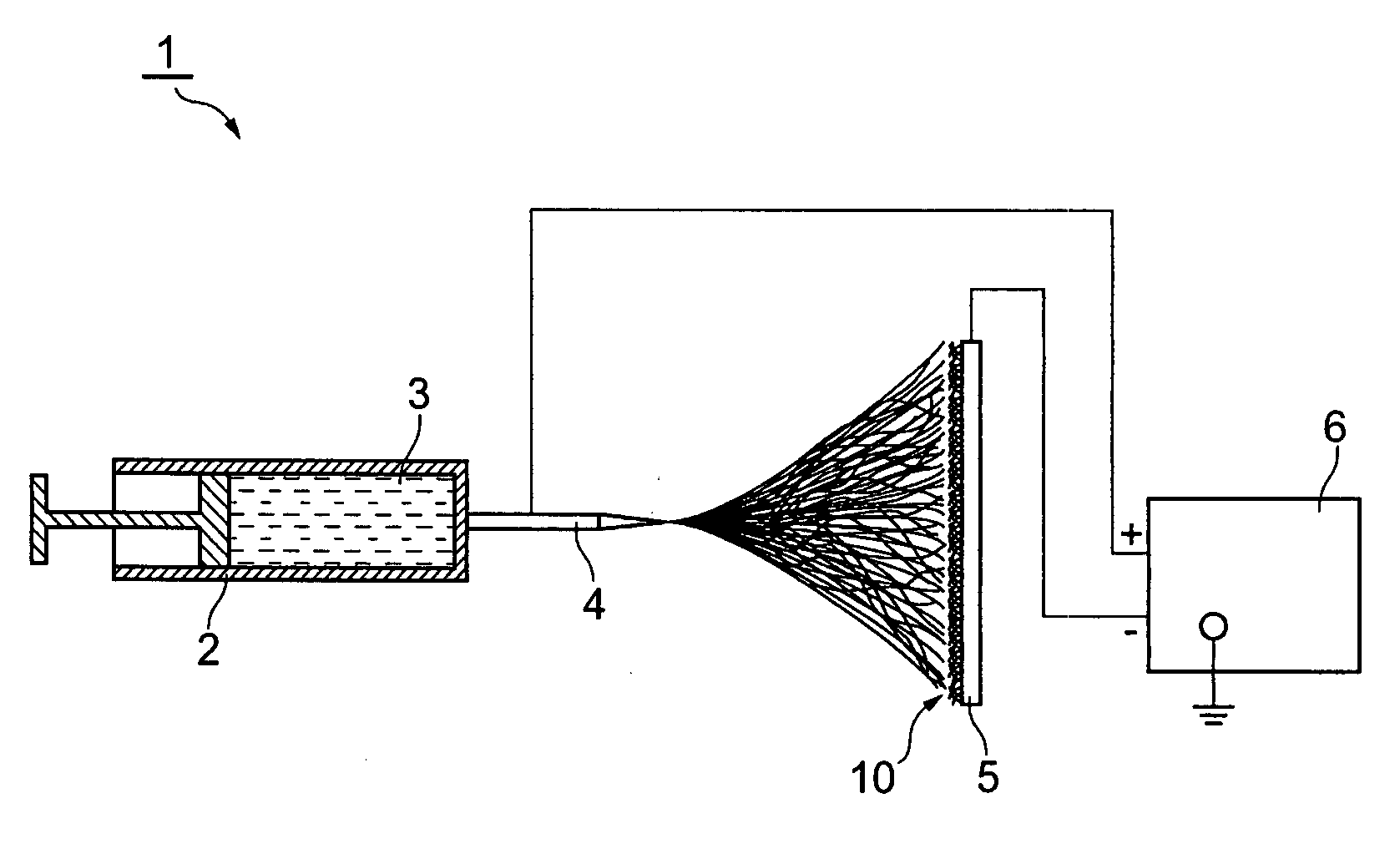Method for producing polyethersulfone fiber
- Summary
- Abstract
- Description
- Claims
- Application Information
AI Technical Summary
Benefits of technology
Problems solved by technology
Method used
Image
Examples
synthetic example 1
[0081]A 500-mL SUS316 polymerizing tank equipped with a nitrogen inlet, a paddle type stainless steel stirring blade, and a condenser was charged with 25.43 g of bis(4-fluorophenyl)sulfone and 35.04 g of 9,9-bis(4-hydroxyphenyl)fluorene, together with 354.5 g of diphenylsulfone, and then the tank was purged with dry nitrogen for 30 minutes. Subsequently, the mixture melted in an oil bath at 180° C., and then 14.37 g of potassium carbonate was added thereto.
[0082]Next, the mixture was reacted at 180° C. for one hour while being purged with nitrogen. Then, the temperature thereof was raised to 230° C. over 7 hours, followed by retaining the temperature for 12 hours to obtain a viscous polymer mixture. After that, the obtained mixture was poured into a metal tray is and solidified as being cooled at a room temperature. The solidified polymer mixture was pulverized, sieved with a 1.3-mm sieve, and washed with a hot deionized water, acetone, and methanol.
[0083]After the washing, the obta...
synthetic example 2
[0084]Polyethersulfone B was obtained in the same manner as in Synthetic Example 1 except that:
[0085]28.03 g (instead of 35.04 g) of 9,9-bis(4-hydroxyphenyl)fluorene was used;
[0086]5.01 g of bisphenol S was used together with the bis(4-fluorophenyl)sulfone and the 9,9-bis(4-hydroxyphenyl)fluorene; and
[0087]1.4-mm sieve (instead of 1.3-mm sieve) was used before washing the resulting polyethersulfone mixture with the hot deionized water, acetone, and methanol.
[0088]The glass transition temperature of the polyethersulfone B measured was 274° C.
synthetic example 3
[0089]Polyethersulfone C was obtained in the same manner as in Synthetic Example 2 except that:[0090]the 9,9-bis(4-hydroxyphenyl)fluorene was not used; and
[0091]12.37 g (instead of 14.37 g) of the potassium carbonate was used.
[0092]The glass transition temperature of the polyethersulfone C measured was 227° C.
PUM
| Property | Measurement | Unit |
|---|---|---|
| Temperature | aaaaa | aaaaa |
| Diameter | aaaaa | aaaaa |
| Density | aaaaa | aaaaa |
Abstract
Description
Claims
Application Information
 Login to View More
Login to View More - R&D
- Intellectual Property
- Life Sciences
- Materials
- Tech Scout
- Unparalleled Data Quality
- Higher Quality Content
- 60% Fewer Hallucinations
Browse by: Latest US Patents, China's latest patents, Technical Efficacy Thesaurus, Application Domain, Technology Topic, Popular Technical Reports.
© 2025 PatSnap. All rights reserved.Legal|Privacy policy|Modern Slavery Act Transparency Statement|Sitemap|About US| Contact US: help@patsnap.com



